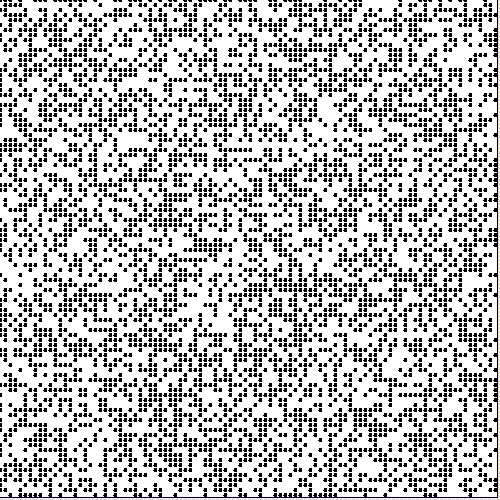Conway’s Game of Life
|
The design of organisations and products
|
The “Game of Life” is a cellular automaton — not really a game in a meaningful sense, since it plays by itself — invented by John Conway in 1970.
It comprises an unbounded, two-dimensional grid of cells, each of which may be “live” (black) or “dead” (white). At each generation every cell interacts with its eight adjacent cells (“neighbours”) as follows:
- Any live cell with two or three live neighbours stays live.
- Any dead cell with three live neighbours becomes live.
- All other live cells die.
- All other dead cells stay dead.
One interacts with the Game of Life by simply creating the initial configuration. Thereafter, one simply watches as it evolves following this simple algorithm. Each generation is a pure function of the preceding one. The rules continue to be applied repeatedly to create further generations.
If you let it go for long enough, or start with an interesting enough configuration, you start to get some quite impressive, and quite unexpected, patterns. This has led computer scientists and reductionists and evolutionary biologists to rejoice with a hosannah, for it explains
